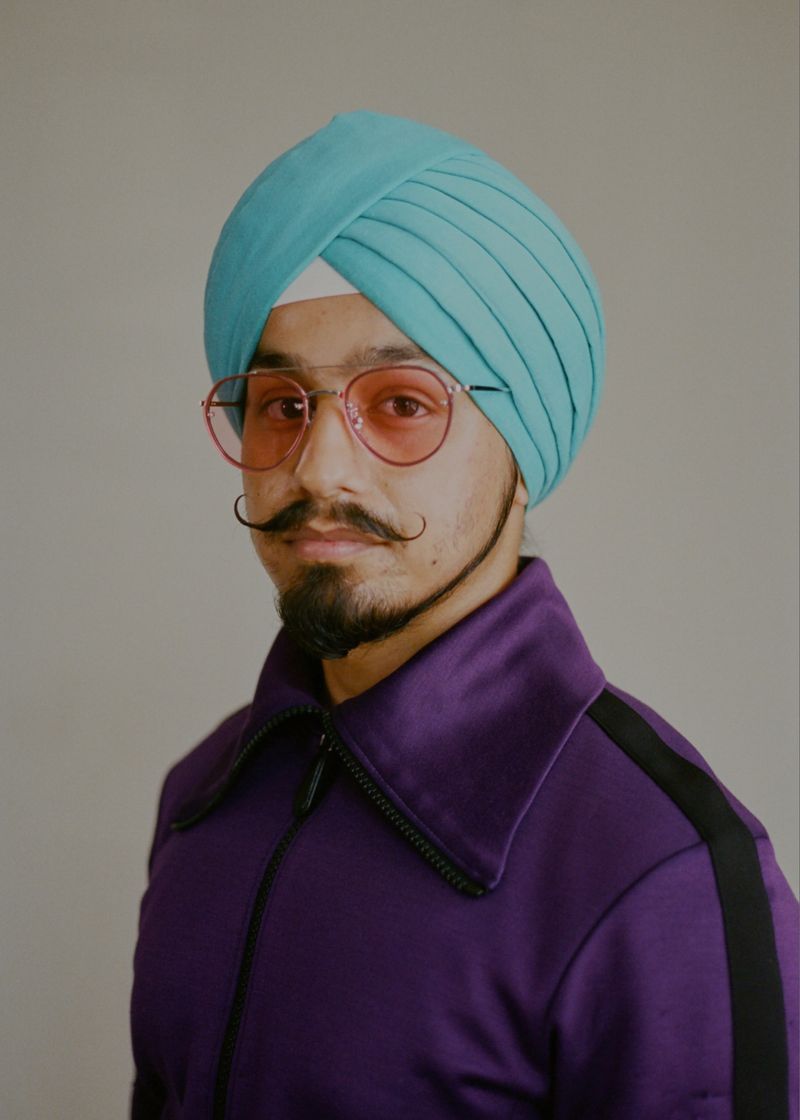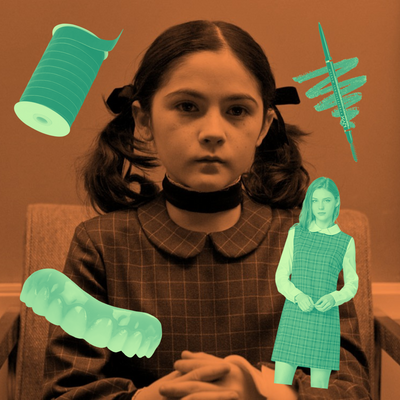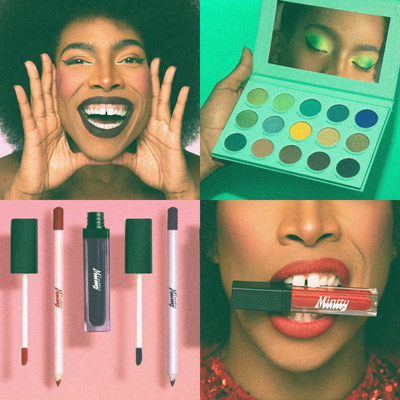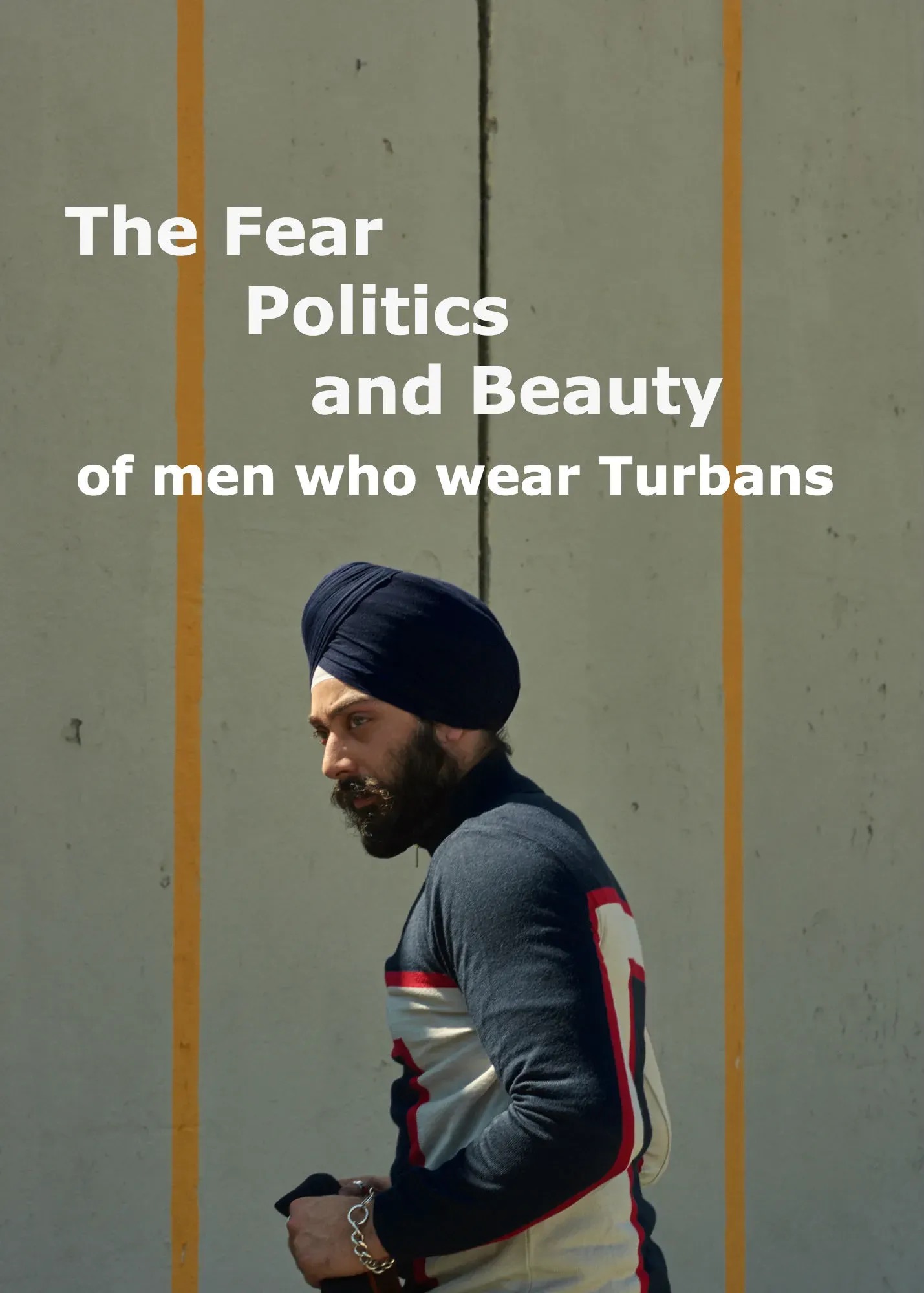
“My teacher called me a terrorist one time.”
So says Sahaj Anand, a student at Emory University, who happens to be Sikh American. Though the thought of being labeled as something so outrageous is undoubtedly painful, sadly, for Sahaj, it’s something that he’s gotten used to. For him and the 500,000 other Sikh Americans, being targeted for wearing their turbans – a symbol of humility and faith –has become commonplace in their daily lives.
“The turban symbolizes a sense of royalty, a sense of equality, a sense of peace,” says Ashish, who resides in New Jersey. “Meanwhile, it’s become a subject of fear.” He’s correct in what he says. The turban is equated with regality in India, a religion that’s not only highly respected but revered.
“It’s a religion that others respect because they know that Sikhs will always be the firsts to help out anyone in trouble,” says Manvir, a policy advisor based in Brooklyn. “We’re the good Samaritans, always there to help.”
But in the past few decades, in U.S. and other Western countries, the public has come to fear the turban. Sikh American groups say members of their religion have faced extreme abuse and discrimination because they are mistaken for Muslims. It doesn’t help that Sikh men and the way they present themselves – their grown out facial hair and often brightly colored turbans – make them easily visible, more so than any other minority groups.
“As a regular guy you can do anything as a Sikh you have to go out and say hey we’re here to do no harm,” says Bikram Singh, who lives in Queens.
“As a Sikh American, you have to own it,” says Gurjaap Singh Bindra of New Jersey. “When you walk out those doors and face the day, you have to completely have confidence.”
In the proceeding days after 9/11 there were more than 300 reported hate crimes towards Sikh Americans. After President Donald Trump was elected, hate crimes continued to spike, a fact that Jonathan Greenblatt, the CEO and national director of the Anti-Defamation League, explained in his testimony before the Senate Judiciary Committee. The Sikh Coalition, a non-profit organization, consistently found a majority of Sikh students in this country faced bias-based bullying and harassment.
Harassment and hatred led to a massacre that occurred in August of 2012, where a white supremacist shot and killed six Sikh Americans and injured four. While there has been measures taken with protecting Sikh Americans during the Obama administration, the situation seems dire with the current presidency. In March this year, there was yet another hate crime involving a man shooting a Sikh American in the arm. Sikh American leaders have called for President Trump to take a firm stance against racism and discrimination, though haven’t been met with much support.
“What [President Trump] says goes short of being defined as hate, but in the hearts and minds of the lay person is translated as hate,” said Mejindarpal Kaur, international legal director of global advocacy organization United Sikhs, to CNN.
Though the situation seems dire, to Sikh Americans, it’s another day to shine a positive light onto the world and their peaceful religion. And so they continue to press on with complete confidence and own who they are. Talk to most Sikh Americans and they’ll tell you how proud they are of their turban.
“My turban is my crown,” says Bikram. “It’s everything to me. It’s my look, it’s who I am.”
“I’m Sikh American, and I’m proud of it,” says Sahaj. “I’m proud of my heritage. I’m proud of my turban.”
Recently, we brought six Sikh Americans together to celebrate these regal men. They came together for an original shoot for Very Good Light where they explained what it’s really like to be a young person who proudly wears a turban in America.
Here’s a few facts you should know:
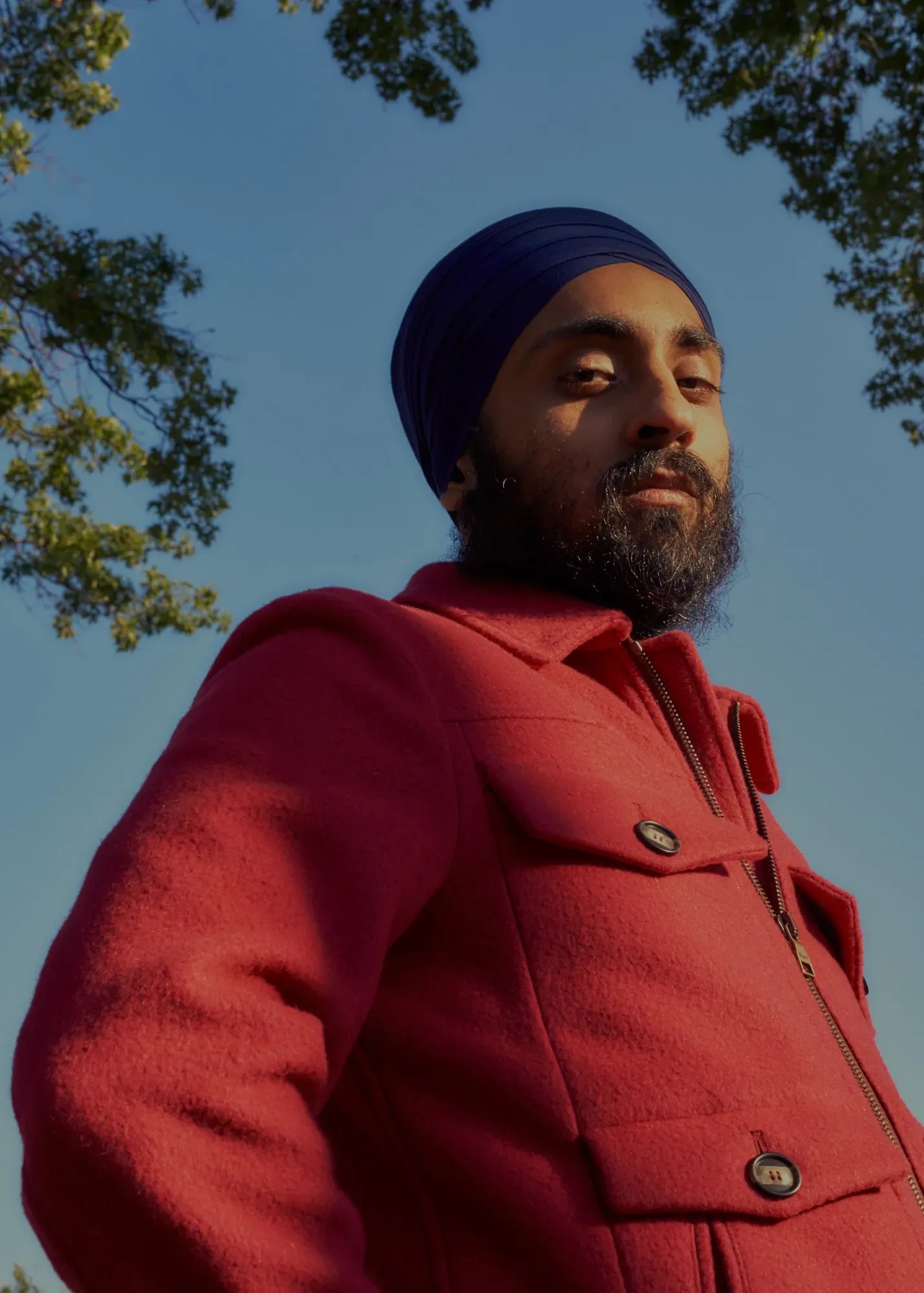
Sikh is pronounced …
With a short “i” sound. Instead of pronouncing it like “seek,” it’s like the word “sick.” The very word means “student.” The Sikh religion is the fifth fastest growing religion in the world. It’s also one that has over 25 million believers around the world and 500,000 in the United States. The entire religion is monotheistic and represented through the phrase Ik Onkar, meaning “One God.”
Religious scholars trace the religion back to the Punjab region in India in the 15th Century. One distinguishing feature of Sikhism is a complete rejection of the caste system.
The religion’s primary source of Scripture for Sikhs is the Guru Granth Sahib, who is regarded as the living Guru, after the final guru in human form, Guru Gobind Singh, passed away. Sikhs worship in a gurdwara, which means “doorway to God.” There are no official clergy though, over time, priests have emerged to serve its followers.
Why do Sikhs wear turbans?
The turban has been used in the past few decades as a fashion statement for many a man and woman. For Sikhs, it’s completely religious, though, of course, many men put their own flair into it. “I match my outfits according to my turban,” Bikram tells Very Good Light. “A lot of us are stylish by nature just because our turbans are so bright and beautiful. I have all colors, some have prints, others are vibrant.” Women usually wear a scarf called a chunni.
This stems back from the 15th Century, when the Sikh religion was developing in South Asia and worn only by the elites of society. In the Sikh religion, though, all people are created equal and there is no caste system. It’s one reason Sikhs wear turbans, as a sign of solidarity, to show humility while also signifying how equal everyone is. Of course, like any religion, there are Sikhs who aren’t as religious or take their own interpretation to Sikhism and choose not to wear turbans.
What’s underneath the turban?
Hair. Lots and lots and lots of beautiful, virgin hair. For Sikhs, cutting any form of hair from the bodies is not in line with their religion. It’s because Sikhs believe hair is a gift from God, a symbol for respecting what’s been given to the religion’s believers. It’s also a constant reminder of the the Sikh religion. And if you were wondering, yes, Sikh Americans wash their hair just as frequently as anyone else. It just takes much, much longer to dry.
So Sikhs don’t ever shave or cut their hair?
Correct. Sikhs never cut any hair. This means that facial hair will continue to grow. Sikhs believe that the body will groom itself and hair will stop growing at a certain length. For many Sikh men, this means being extra creative in their grooming so that their beards aren’t distracting to the public.
But this does not mean that Sikh men aren’t into grooming. This is actually the opposite. Sikh men take extra measures to ensure that they’re presenting themselves in the best light while also adhering to their religion. This means cleaning their beards and taking hours on end to wash their long, thick hair.
“We take cleanliness very seriously and it’s important to our identities,” says Gurjaab Singh, from Princeton, NJ. This also means taking extra steps in the morning and finding creative ways to groom. “I’ll take a beard brush and comb it back with some gel,” he explains. “I’ll then use a blowdryer and dry it. Then, I’ll pin it back underneath my chin.”
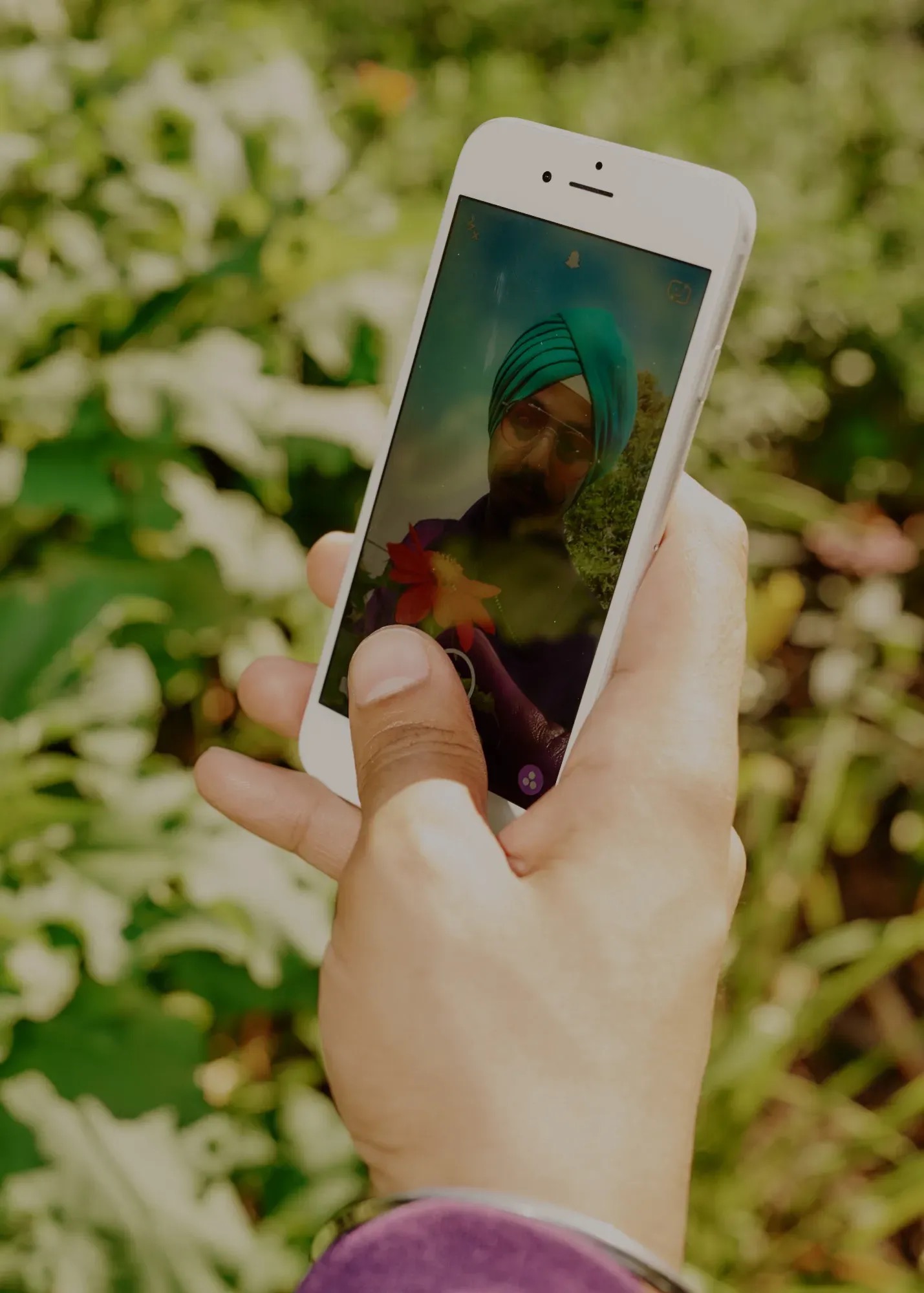
How long does it take to put a turban on?
Ask any Sikh, and they’ll tell you differently. But it’s definitely not a 5-minute process. “For me, it takes up to an hour each morning,” says Arjun Dhillon, from Manhattan. “It’s more of a meditative way to start the morning. You practice your religion through placing on the turban in the morning. It’s very spiritual.”
Sikhs are just as diverse as you and me
Like any religion from Christianity and Judaism, its followers are just as diverse as any. Sikh Americans, as well, are diverse in their interests. It’s important to realize that they are not all the same. They may wear turbans, speak the same languages and adhere to the same rules, but they are just as different and unique as any other American.
Hear from 5 Sikh Americans yourself:
Sahaj Anand
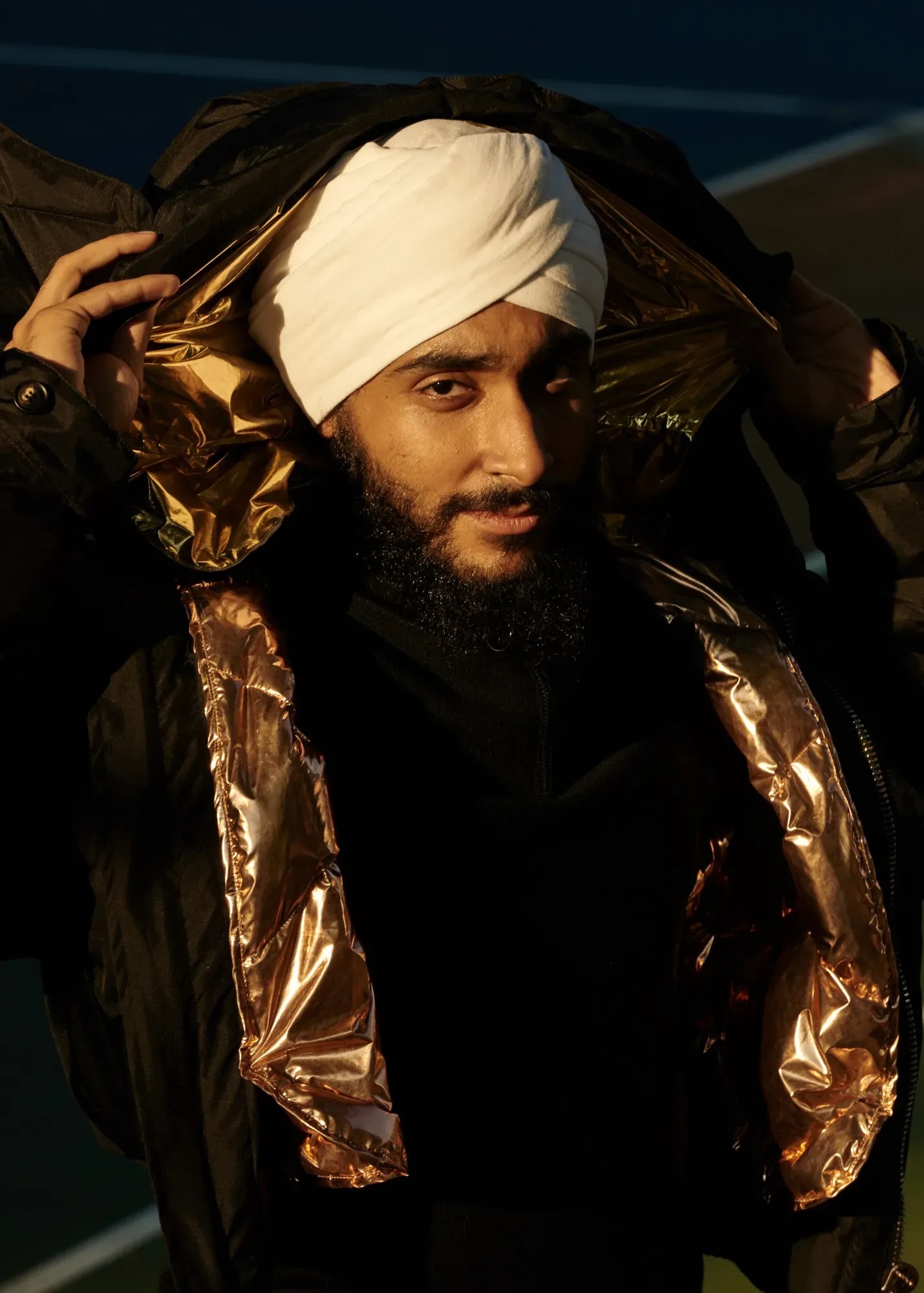
Sikh values are American values. The turban represents equality for all. I grew up like any other American child. I played sports, went to the movies with my friends, had a girlfriend. After finishing up my first semester at Emory I truly feel that my generation will be the ones to get this country back on track.
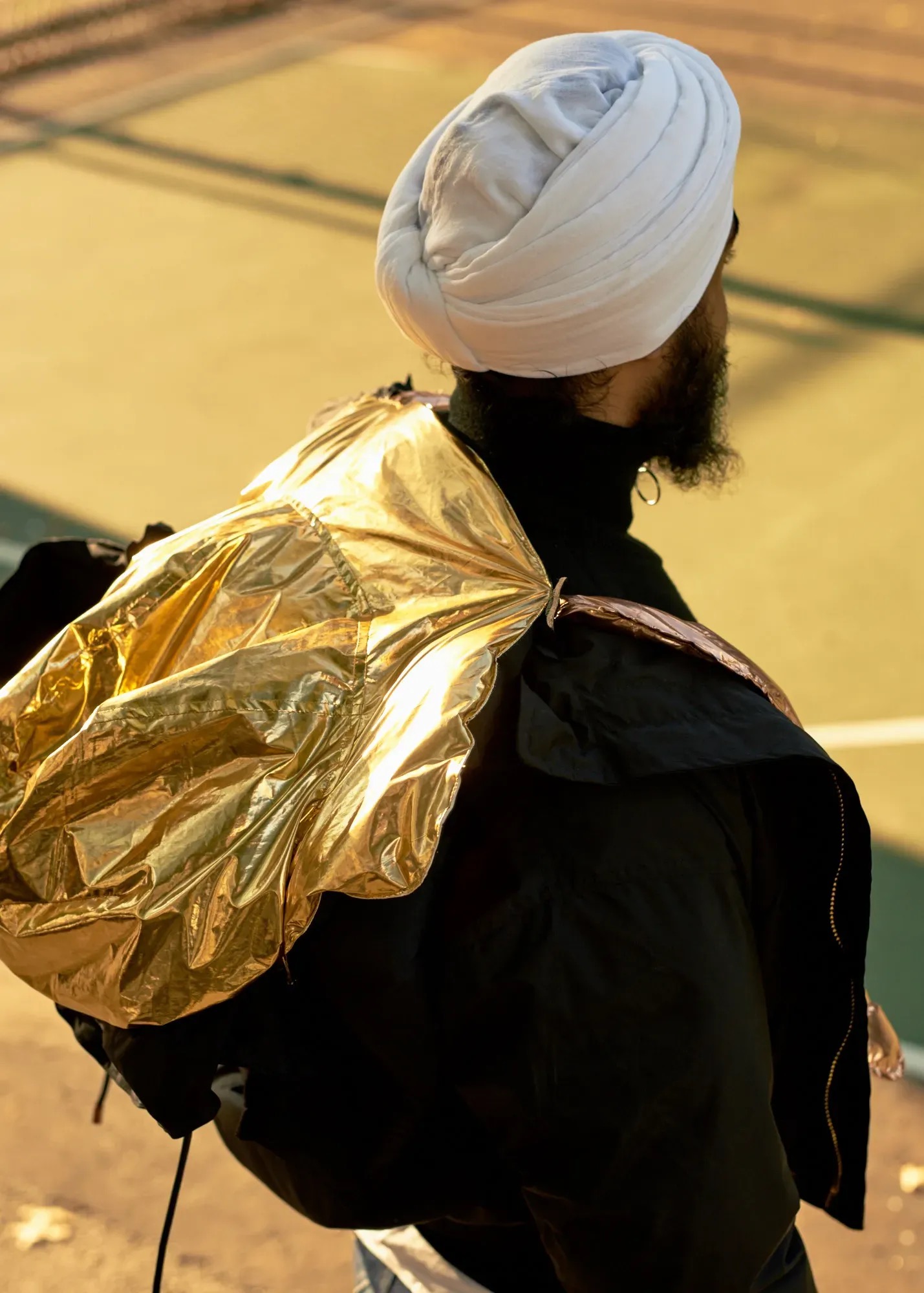
I remember watching the election results in the lobby of my dorm. Once trump took Florida there was a tension felt in the room. Honestly I felt as though America displayed its true views towards me. Maybe I was ignorant, but personally I’ve never felt anything but American. On November 8th, 2016, it was official racism is alive and thriving.
The day after Trump got elected I received a call from my mom saying be careful. I am from New Jersey and now I go to college in the South. Coming from the North the South does have a different feel. I have a great community behind me. The only racism I have experienced is being called derogatory names.
I am a first generation American. Many people who are immigrants have made this country special. Trump is perpetuating a cycle of hate through this immigration ban. This hate will be the downfall of America; our diversity is our pride. Race is not real. It’s a social construct that is made to divide us. Trump is playing to our fears, and it is working.
I literally wear my religion on me. There is no hiding. I get stares which are inevitable. Even though Trump is president I still remember what my father said before he got elected “it’s a great time to be a Sikh in America” we are a large community who have worked hard and will stand with each other. I as a Sikh have a responsibility to do the right thing. Because of our unique identity we represent our community. As Sikhs, we must fight for the oppressed, which is a human responsibility. We all can contribute in our own way. This shoot or any other shoot I do with my turban displays the freedom and pride I have for my religion.
Gurjaap Singh Bindra
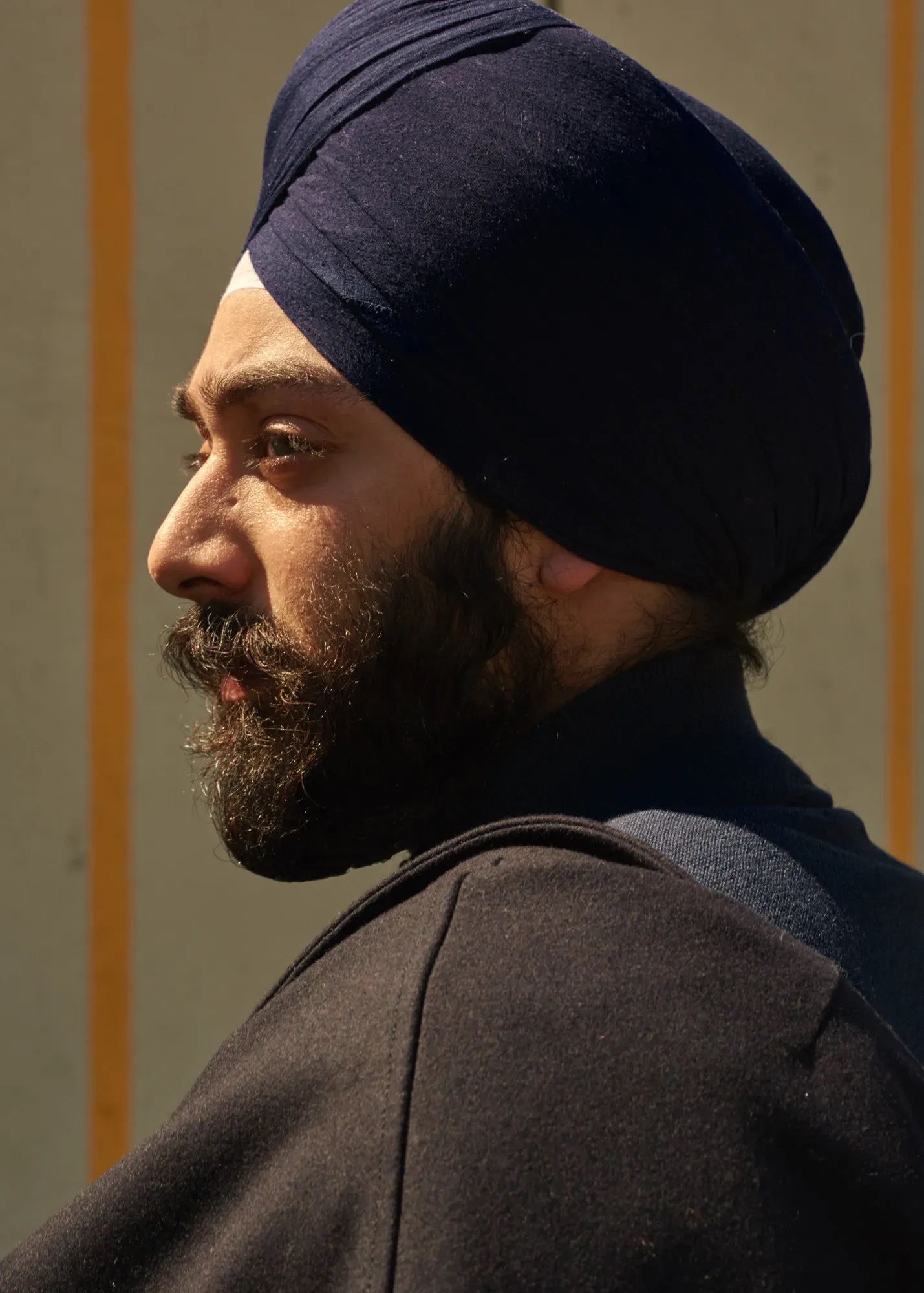
I wish our identity was shown more to the public such as models, actors, singers. That would really help the world understand who Sikhs are and what we look like, but I think the fear of looking different and having more hate is what might keep us all hidden. I also wish people understood that we have a different look and identity in comparison to Muslims. This will help empower the Sikh community and inform people that aren’t very knowledgeable in deciphering the difference between the religions.
So far in 2017, I have not dealt with any issues regarding racism or backlash. To me, being a Sikh American always means two things: you are born to stand out and to learn. “Sikh” means a learner, therefore learners are also teachers, so whatever we know should also be passed on as a wealth of knowledge. I feel it’s my main responsibility to educate people who have the misconception of categorizing us as Muslim’s and just spreading the word of Sikhism.
It’s about education and because of ignorance, these issues, such as hate crimes or racial comments exist. I do fear for the older aged minorities because of the Upbringing of some “hard core” Americans who believe this is only their country and everyone else should go back to theirs. The reason is because they are more fragile and people will target the weaker groups. So as long as the minorities stay strong and confident in who we are and what we look like, that is all that matters.
Arjun Dhillon
After the election, I feel a much heightened sense of concern about the disregard many people hold for minority interests. We just saw a man win the presidency with a platform that played directly to a fear and anger at Muslims, Blacks, Latinos, etc, ,and evidently an electoral majority of this country either couldn’t recognize that or didn’t care.I haven’t personally experienced any overt displays of racist sentiment in the aftermath of the election. I think I feel a personal responsibility to be more engaged with people across the political spectrum to bring more civic engagement into American democracy and social discourse.
Manvir Singh
Days after the election, as a visible person of color, I felt more uncertainty about my safety and well being than I had ever felt before. Though I’m too young to remember the days following 9/11, I imagine that was the same fear my father and other Sikh men felt. I had no direct threats against me but every look, stare, or bump of the shoulder became a potential confrontation that could end with my life.
That said, the actions taken by activists and elected officials have inspired me to continue standing tall and not letting that fear control my life. I personally have not had any racism directed towards me and I credit the activists, Mayor de Blasio and other elected officials of New York City who began the stand against President Trump’s hateful rhetoric even before the election. Knowing that our public officials have our back and that my fellow NYers are ready to respond to hate goes a very long way.
To me, the recent travel ban is an attack on everything America stands for. It is a ban that uses religion to discriminate against those who need our support the most and makes me ashamed of our country. The free flow of people, ideas and culture is the reason America has excelled in the world and by arbitrarily banning people from those countries, we are not only hurting them but also ourselves. But this whole episode also gave me my first glimmer of hope since the election with the protests at JFK airport.
Within hours after the ban was issued, local NYC activists such as D.R.U.M (Desis Rising Up and Moving), lawyers, elected officials, journalists and average NYers had taken over JFK to show the President that these were not the values we stood for. Seeing our protest spread to airports across the country inspired me to stop talking and do something about it.
I feel a lot of pride in being a Sikh American in 2017. Like many other PoCs and immigrants in this country, Sikhs have a long history of being discriminated against but we have not let that define us. We are more than a series of hate crime statics and post 9/11 stories. I feel proud to be a Sikh because I know as a Sikh, it is my duty to stand up for the disenfranchised and unheard. This responsibility is what drives me to speak out not only about issues effecting the Sikh community, but also about issues effecting my neighbors and fellow citizens such as anti-blackness, islamophobia, and anti-LGBT violence.
In Sikhi, we believe in the concept of “Chardi Kala,” which means eternal joy and optimism even during times of adversity. Even though we’re going through what feels to be an especially difficult period in this country, we must always stay in “Chardi Kala” in order to keep fighting against the hateful and dangerous policies of this president.
Bikram Singh
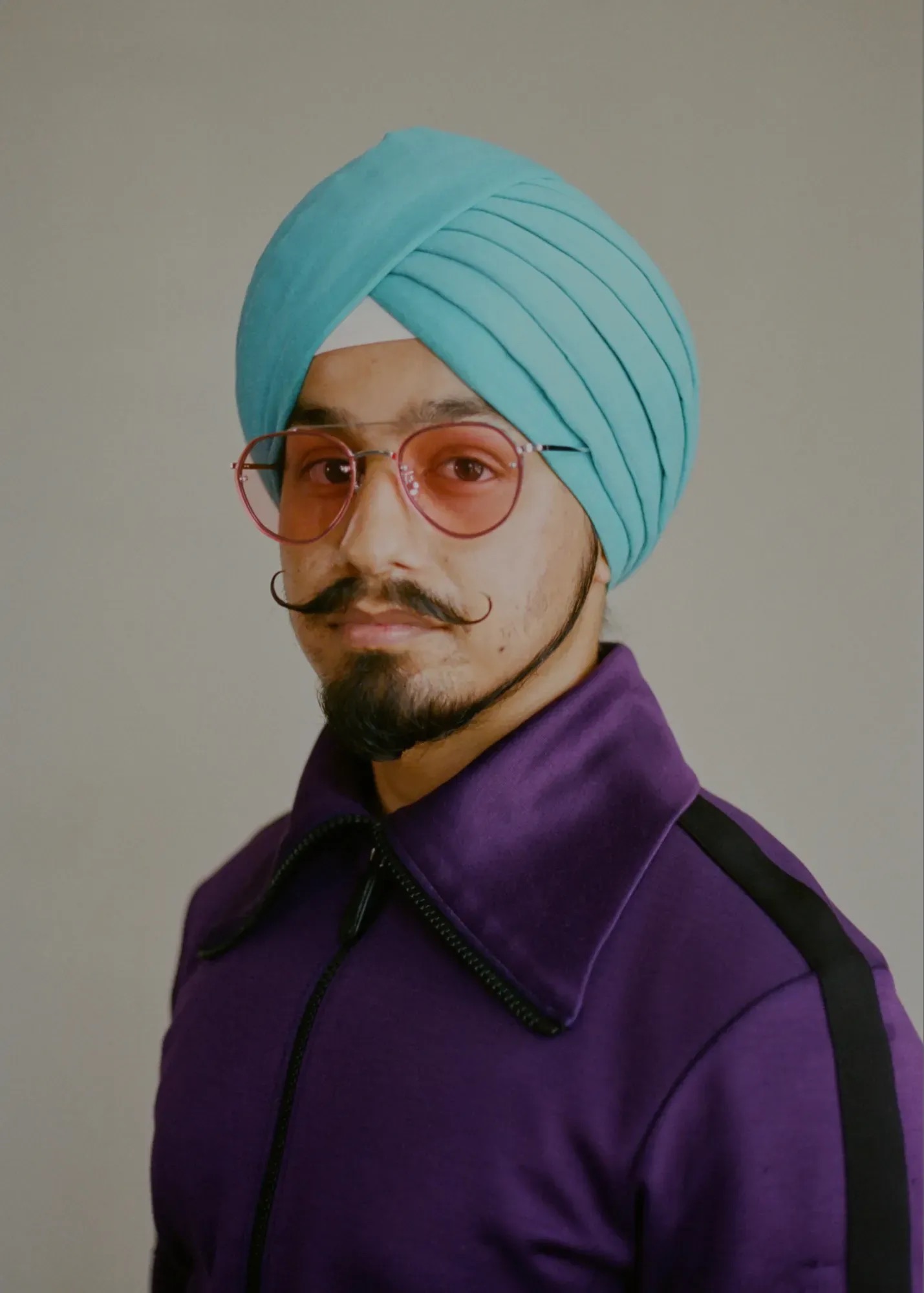
The day after the election was a tough day. At least emotionally. There was a very dark/gloomy vibe all around. Everyone was quieter than usual on the trains. People had a look of fear and concern on their faces. During the first few weeks, I was extremely alert of my surroundings and wherever I went, I was afraid I might be attacked by someone.
Fortunately, I have not. In fact, I have been approached by a few people who recognize me as a Sikh and we share a brief conversation about me and my religion. Those few minutes with a stranger do so much to boost my confidence and hope in this country and its future.
As a Sikh in America in 2017, I feel there is a lot of work to be done. Not just for myself, but for future Sikh American generations as well. I go out of my way to present myself as “American” as possible. For example, although my job does not require me to wear a suit and tie, I choose to do so, every day. One reason is, I love to dress up, because, well, I’m sexy AF! But also, I have noticed small interactions, such as someone holding the door for me or the LIRR train conductor saying “good morning sir,” versus other occasions when I am not, and people staring at me as if I walked out of my without pants.
I also have started to make the effort to give a lot of smiles at anyone and everyone who stares at me. I will also throw in a “Good Morning” or “Hey/Hello” and the instant they hear my voice (without an Indian accent or whatever they though I would sound like), they say hi back and in most cases, feel embarrassed for staring at me earlier! Hopefully, next time they see another Sikh, they won’t do the same.
Sikhs are some of the most loving, happy, funny, and awesome people! We do all things every American does: we watch sports, join little leagues, do ballet, create art, act, attend polo matches, mow the lawn, love to throw an awesome BBQ, you name it.
If you see a Sikh, and want to get to know him/her, just drop a “hello” and watch the Sikh reply with a huge smile and warm response.
Credits.
Director: Luke Versalko
Video Editor: Christine Jun
Photographer: Mike Tessier
Grooming: Jess Ortiz
Stylist: Christopher Kim
Assisted by: Stephanie Strickland-Smith and Ann Yee

